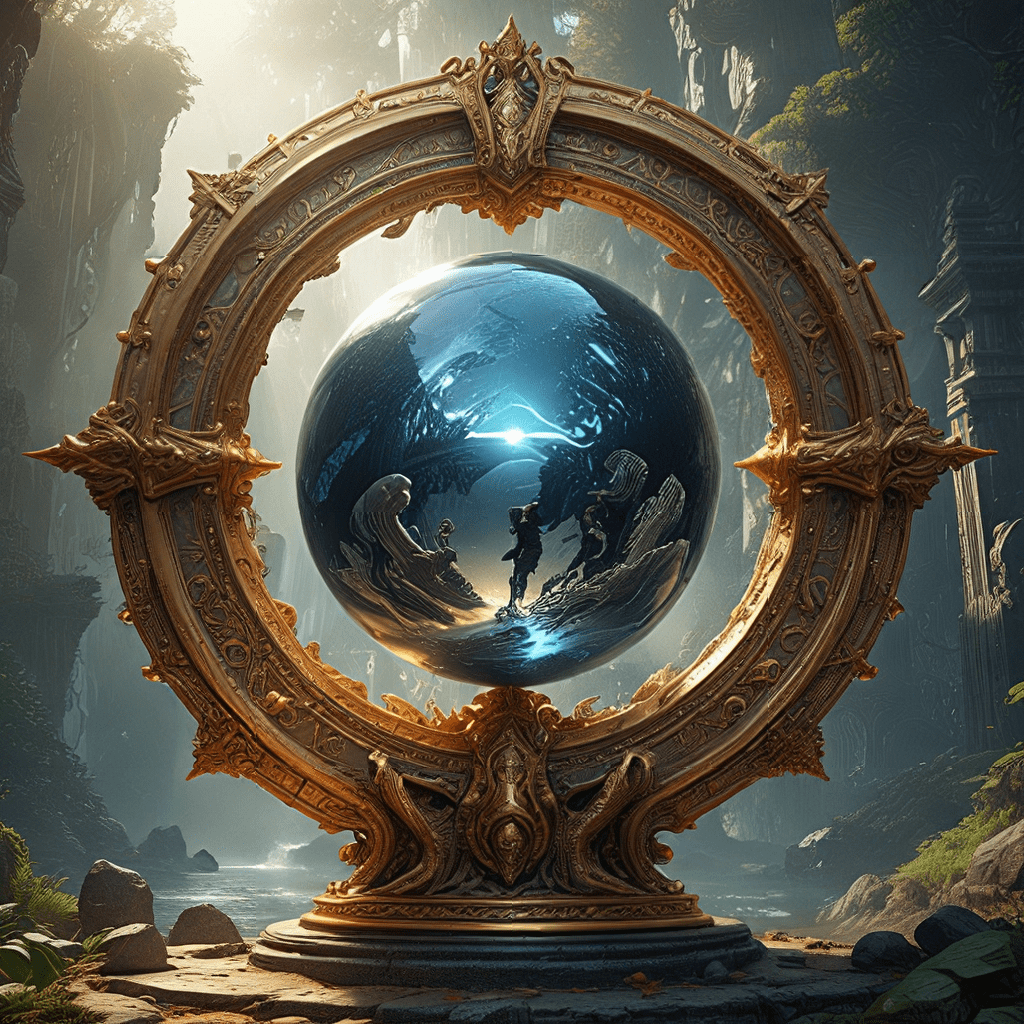The Hidden Meanings: Unraveling the Secrets of the Egyptian Creation Story
The ancient Egyptians, known for their advanced civilization and awe-inspiring monuments, also left behind a rich tapestry of myths and legends. Among these, the creation story stands out as a captivating tale that offers profound insights into their worldview and beliefs. This article delves into the enigmatic world of Egyptian creation myths, unraveling the secrets hidden within its intricate narrative.
The “Ogdoad” of Hermopolis: The First Step Towards Existence
The Egyptian creation story begins with a mysterious group of eight deities known as the “Ogdoad” of Hermopolis. These primordial beings, representing the forces of chaos and darkness, emerged from the primeval waters of Nun. The Ogdoad, consisting of four pairs of male and female deities, represented the fundamental elements of existence: water, air, darkness, and nothingness. Their presence marked the initial spark of creation, paving the way for the emergence of order and light.
The Role of Atum: The Self-Created God and the Birth of the Cosmos
From the chaotic depths of Nun, emerged Atum, the self-created god. He was often depicted as a solitary being, embodying the essence of creation itself. Atum, through his own will and power, brought forth the universe. He emerged from the primordial waters, embodying the sun, and brought forth the land, Shu (air), and Tefnut (moisture). By separating the earth from the heavens, Atum established the fundamental structure of the cosmos.
The Birth of Gods and Goddesses: The Divine Family Tree
Atum, the self-created god, continued to create a divine family tree, giving rise to a pantheon of deities. Shu and Tefnut, the air and moisture deities, gave birth to Geb (earth) and Nut (sky), solidifying the foundation of the universe. Geb and Nut, in turn, produced the powerful deities Osiris, Isis, Set, and Nephthys, marking the emergence of a cosmic family that played crucial roles in Egyptian mythology and religion.
The Creation of Humanity: A Divine Gift or a Necessary Tool?
According to Egyptian mythology, the creation of humanity was a divine act, intended to serve the gods. The exact manner of creation varied across different myths. Some accounts suggest that humanity was fashioned from clay by the god Khnum, while others attribute creation to the tears of the god Ra. Regardless of the specific method, the purpose of humanity was clear: to serve the gods and maintain the cosmic order.
The Importance of Ma’at: Order, Justice, and the Cosmic Balance
Central to the Egyptian worldview was the concept of Ma’at, representing order, justice, and harmony. Ma’at was seen as the cosmic force that maintained balance throughout the universe. Humans, as part of the divine creation, were entrusted with upholding Ma’at through their actions. This concept of cosmic order permeated all aspects of Egyptian life, influencing their laws, religion, and social structure.
The Sun God Ra: The Divine Spark of Life and Cosmic Energy
Ra, the sun god, played a pivotal role in Egyptian mythology, representing the source of life and cosmic energy. His daily journey across the sky, from sunrise to sunset, symbolized the cycle of creation, renewal, and life. Ra’s association with the sun, the source of warmth and light, solidified his position as a powerful and life-giving deity.
The Symbolism of the “Ben-Ben” Stone: The Foundation of the World
The “Ben-Ben” stone, a pyramidal rock, held significant symbolic meaning in Egyptian mythology. It represented the primordial mound that emerged from the primeval waters, serving as the foundation of the world. The Ben-Ben stone symbolized stability, permanence, and the origin of creation. The pyramid shape, inspired by this stone, became a central element in Egyptian architecture.
The Hidden Meanings: Unmasking the Deeper Layers of the Creation Story
The Egyptian creation story, like many ancient myths, holds deeper meanings beyond its literal interpretation. The narrative serves as a reflection of the ancient Egyptians’ understanding of the universe, their place within it, and the importance of order and balance. The story emphasizes the interconnectedness of all things, the power of the divine, and the responsibility of humans to maintain cosmic harmony.
Beyond the Literal: The Egyptian Creation Story as a Guide to Life and Morality
The Egyptian creation story transcends its role as a mere narrative; it functions as a guide to life and morality. The concept of Ma’at underscores the importance of righteousness, justice, and harmony in human interactions. The cyclical nature of creation, represented by Ra’s daily journey, reinforces the significance of renewal, rebirth, and the enduring power of life. The creation story served as a foundational text for the Egyptian way of life, shaping their beliefs, customs, and worldview.




